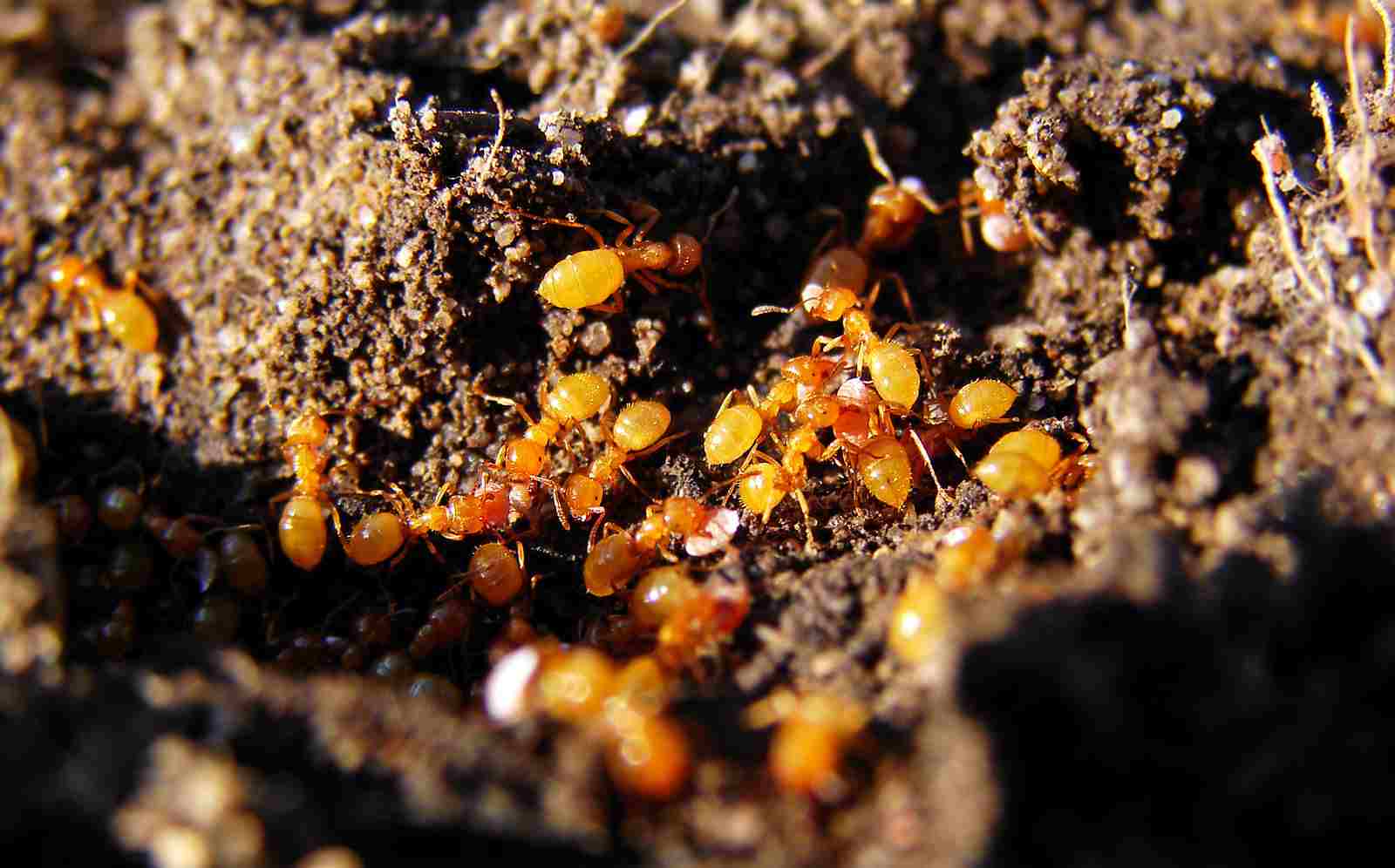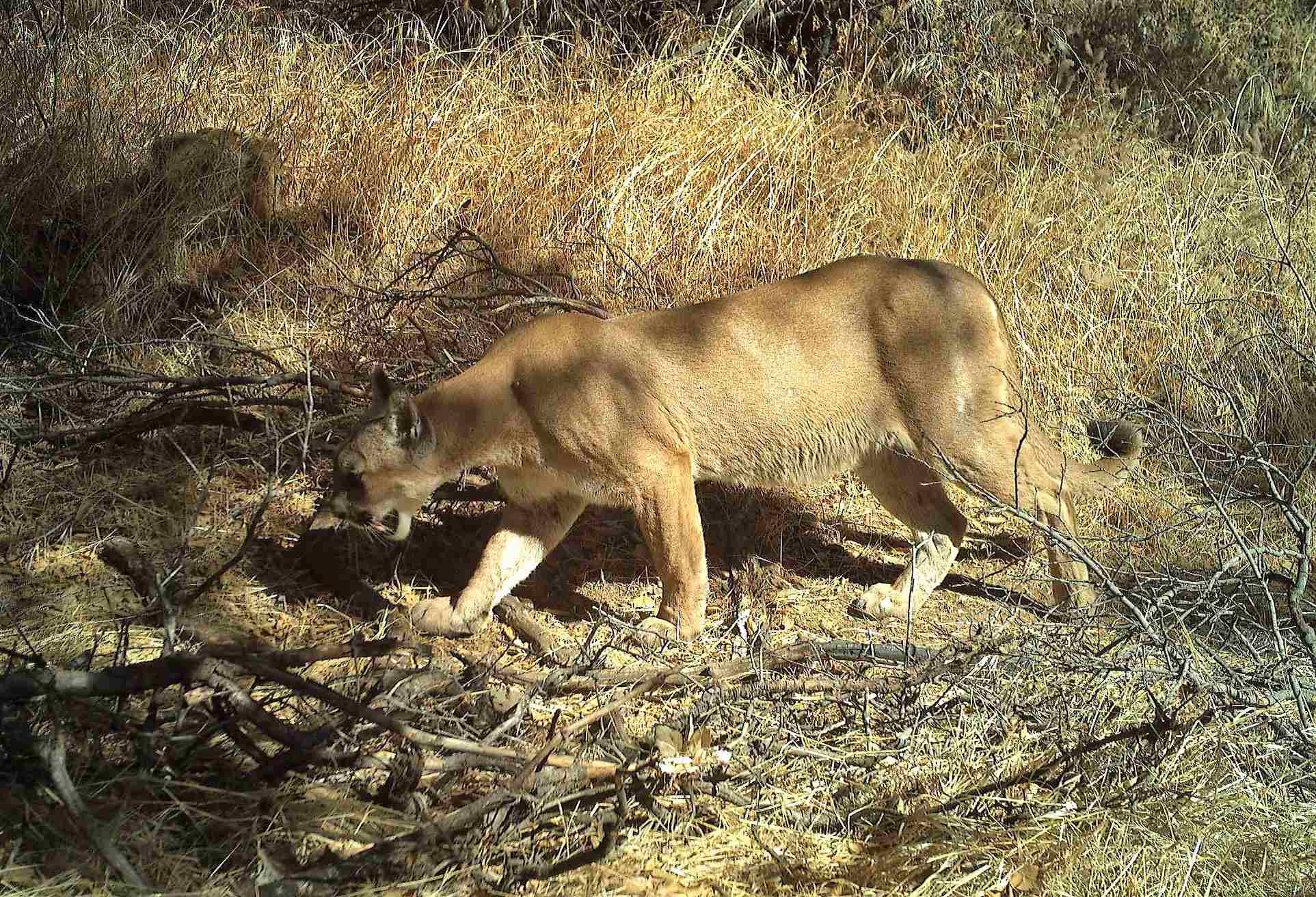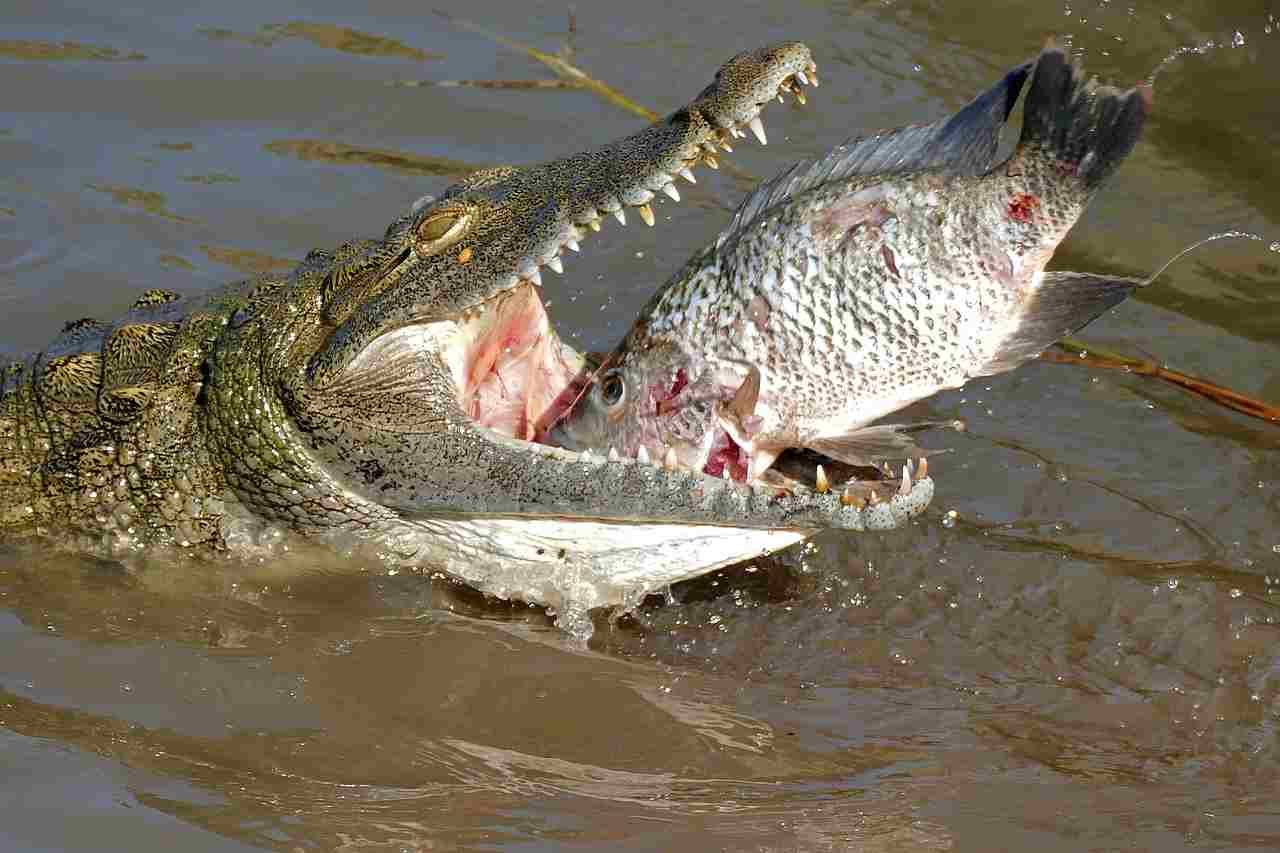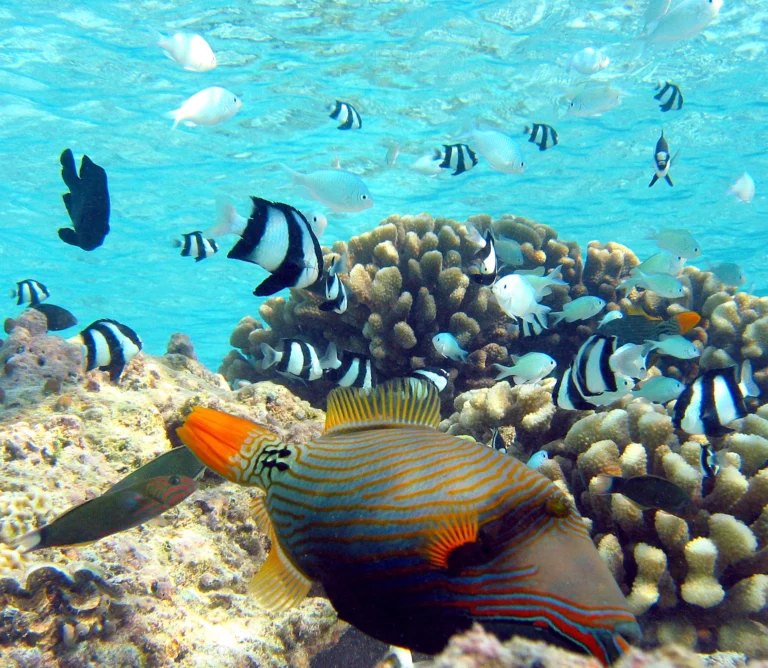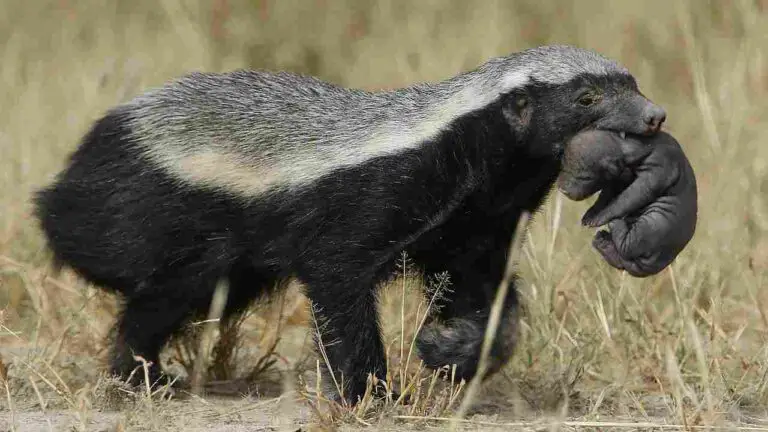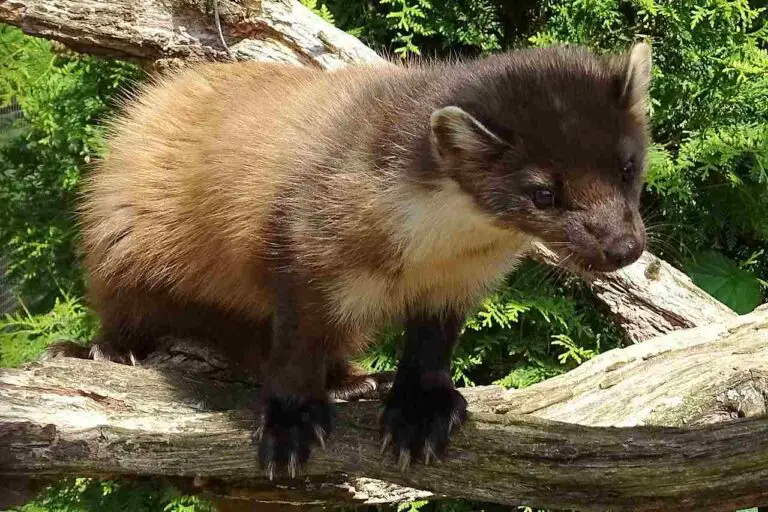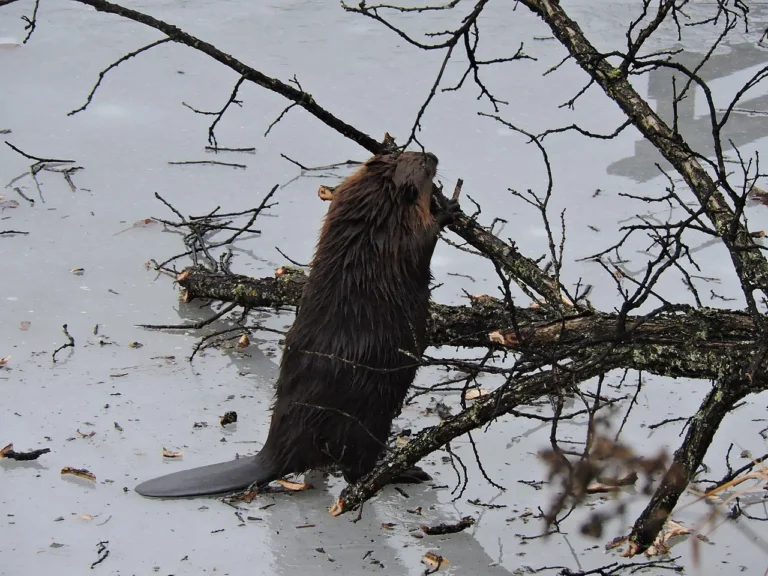23+ Dangerous Animals In Costa Rica Discussed
Examples of dangerous animals in Costa Rica are the fer-de-lance, a highly venomous snake, and the jaguar, a powerful big cat. Other dangers include the army ants that can swarm if disturbed, and the bullet ant, known for having the most painful sting of any insect. The American crocodile and bull shark are also on the list due to their aggressive nature in certain situations. Caution is advised when exploring areas where these and other dangerous animals reside.
1. Jaguar
The jaguar, a majestic and powerful big cat native to the Americas, is among the most feared predators in Costa Rica’s diverse ecosystems. These stealthy hunters can grow to significant sizes, with some males reaching over 200 pounds and more than 6 feet in length. Jaguars are adept at stalking and ambushing their prey, using their powerful jaws to deliver crushing bites. Although they typically avoid human interaction, their habitat spans dense forests and secluded regions where encounters with humans, though rare, could be dangerous. Jaguars play a crucial role in maintaining the balance within their ecosystems, preying on a wide range of animals and helping to control the population of other potentially harmful species. Their beauty and prowess in the wild are awe-inspiring, but their presence also reminds us of the importance of respecting and preserving their natural habitats.
2. Puma
The puma, also known as the mountain lion or cougar, is another formidable big cat found in Costa Rica. While generally solitary and elusive, pumas are known for their incredible agility and adaptability across various habitats, from dense forests to mountainous regions. They can reach speeds of up to 50 miles per hour and leap impressive distances, making them effective predators. Although they typically avoid humans, conflicts can occur, particularly when they encroach on human territory in search of food. Despite these risks, pumas play an important role in the ecosystem by helping to regulate prey populations and maintain a balanced environment.
3. American Crocodile
The American crocodile is a large, formidable reptile commonly found in Costa Rica’s coastal regions, rivers, and estuaries. Growing up to 20 feet in length, these crocodiles are apex predators, feeding on fish, birds, and small mammals. They are generally shy and avoid human contact, but their sheer size and strength make them dangerous, especially when humans venture too close to their territory. Encounters with these crocodiles can be perilous, and it’s crucial to exercise caution and adhere to safety guidelines when in their habitat. The American crocodile is a protected species, contributing to biodiversity and wetland health.
4. Fer-de-Lance (Bothrops asper)
The fer-de-lance is one of the most feared snakes in Costa Rica, known for its potent venom and aggressive behavior. This viper is responsible for the majority of snakebites in the country, and its bites can cause severe tissue damage, bleeding, and, if untreated, can be fatal. Typically found in lowland rainforests and agricultural areas, the fer-de-lance is well-camouflaged, making it difficult to spot and increasing the risk of accidental encounters. Its defensive nature and rapid strike make it a significant danger to humans, emphasizing the need for caution when exploring areas where it may be present.
5. Bushmaster (Lachesis muta)
The bushmaster is the largest venomous snake in the Americas, and it’s found in Costa Rica’s dense rainforests. This snake can grow up to 10 feet in length and is known for its potent venom and aggressive behavior when threatened. Unlike some other venomous snakes, the bushmaster is primarily nocturnal and prefers to stay hidden during the day, making it less likely to be encountered by humans. However, when it does feel threatened, it can strike with alarming speed and precision. Given its dangerous reputation, it’s crucial to be vigilant and cautious when exploring its natural habitats in Costa Rica.
6. Eyelash Viper
The eyelash viper is a small but highly venomous snake found in Costa Rica’s rainforests. Named for the distinctive “eyelash”-like scales above its eyes, this viper comes in various vibrant colors, including yellow, green, and brown. Despite its striking appearance, it has a potent venom that can cause severe pain, swelling, and tissue damage. Eyelash vipers are typically arboreal, often hiding in trees and bushes, which increases the risk of accidental encounters with humans. Their presence in popular ecotourism areas makes it essential for visitors to be cautious and to avoid touching or approaching unfamiliar vegetation.
7. Coral Snake
The coral snake is a brightly colored and highly venomous snake found in Costa Rica. Known for its distinct red, black, and yellow banding, this snake has a neurotoxic venom that can cause paralysis and respiratory failure if left untreated. Coral snakes are generally shy and tend to avoid human contact, but their vibrant colors can attract curiosity, leading to dangerous encounters. It’s crucial to distinguish them from non-venomous mimics, as the pattern can be similar. In Costa Rica, the coral snake is found in forests and rural areas, and proper education on snake safety is key to preventing potentially deadly encounters.
8. Green Iguana (in certain situations)
The green iguana, while generally not aggressive, can pose risks in certain situations. These large lizards are common in Costa Rica, often seen basking in trees or near water. Although they primarily eat plants, they can grow over 6 feet in length and have strong tails, which they use for defense when threatened. In defensive mode, a green iguana can deliver painful tail whips and sharp bites with its serrated teeth. Moreover, their tendency to drop from trees can lead to unexpected injuries for passersby. While not inherently dangerous, it’s important to respect their space and avoid provoking them.
9. Brazilian Wandering Spider
The Brazilian wandering spider, known for its aggressive behavior and potent venom, is a notorious arachnid found in Costa Rica. This spider, one of the most venomous in the world, is typically found in tropical forests and banana plantations, hence its other name, the banana spider. Its venom contains neurotoxins that can cause severe pain, paralysis, and even death in some cases. What makes this spider particularly dangerous is its tendency to wander, leading to unexpected encounters with humans. Its aggressive nature and rapid movements require caution and vigilance in areas where it is known to live.
10. Bullet Ant

The bullet ant is renowned for having one of the most painful stings of any insect in Costa Rica. Found in tropical rainforests, this large ant can grow up to 1.2 inches in length and is known for its aggressive behavior when defending its colony. The sting of a bullet ant has been compared to being shot with a bullet, causing intense pain that can last for hours. Although the pain is excruciating, the sting is not typically life-threatening to humans. However, its extreme discomfort underscores the importance of avoiding disturbing these ants and exercising caution when exploring their habitats.
11. Botfly (larvae can be harmful)
The botfly is a unique insect in Costa Rica, but its larvae can be harmful to humans and animals. This parasitic fly lays its eggs on a host, typically a mosquito or other insect, which then transfers the eggs to a mammal. When the eggs hatch, the larvae burrow into the skin, causing painful sores and potential infections. Although not inherently aggressive, the botfly’s life cycle can lead to distressing situations for those affected by its larvae. Proper medical treatment is necessary to remove the larvae safely and prevent further complications. To avoid infestation, it’s crucial to use insect repellent and take precautions in areas where botflies are known to be present.
12. Black Widow Spider
The black widow spider is a small but highly venomous arachnid found in Costa Rica. Characterized by its glossy black body and distinctive red hourglass marking on the abdomen, this spider’s venom contains neurotoxins that can cause severe pain, muscle cramps, and in some cases, respiratory distress. Black widow spiders are generally shy and prefer dark, undisturbed areas, such as woodpiles or sheds. Although bites are relatively rare, they can be dangerous, especially to young children and the elderly. It’s important to exercise caution and inspect areas where these spiders might be hiding to avoid accidental bites.
13. Scorpion
Scorpions are common in Costa Rica, with various species ranging from mildly venomous to potentially dangerous. While most scorpion stings cause localized pain, swelling, and discomfort, some species have venom potent enough to cause severe reactions, especially in sensitive individuals. Scorpions are typically found in dark, secluded areas, such as under rocks or logs, and can inadvertently enter human dwellings. To prevent scorpion stings, it’s advisable to check shoes, clothing, and bedding in areas where they are prevalent. If stung, medical attention may be necessary, especially if severe symptoms develop.
14. Army Ants
Army ants, known for their aggressive swarming behavior, are a formidable presence in Costa Rica’s forests. These ants move in large colonies, comprising thousands of individuals, and can strip an area of food and resources rapidly. While they typically do not attack humans unprovoked, any perceived threat to their colony can trigger a massive assault. Army ants use their powerful mandibles to defend their territory, and their swarms can be overwhelming. Although they play a crucial role in the ecosystem by controlling other insect populations, encountering them in the wild can be a daunting and potentially dangerous experience. It’s best to avoid their swarming paths and give them a wide berth.
15. Harpy Eagle (due to size and strength)
The Harpy Eagle, one of the largest and most powerful eagles in the world, is found in the rainforests of Costa Rica. With wingspans exceeding 7 feet and sharp talons designed to capture large prey, these eagles can be intimidating. Although they primarily hunt animals like monkeys and sloths, their sheer size and strength make them potentially dangerous, particularly if they feel threatened or are protecting a nest. Harpy Eagles play a vital role in the ecosystem by controlling prey populations, but their presence demands respect and caution when exploring their habitat.
16. Cone Snails
Cone snails are marine mollusks found in Costa Rica’s coastal waters. Despite their beautiful, cone-shaped shells, these snails are equipped with a venomous harpoon used to immobilize prey. Some species of cone snails are highly toxic to humans, and a single sting can cause severe pain, paralysis, or even death in extreme cases. Because of their alluring shells, people might inadvertently handle them, leading to dangerous encounters. When exploring tide pools or beaches in Costa Rica, it’s crucial to avoid touching unknown shells and to be aware of the potential risks posed by cone snails.
17. Moray Eel
Moray eels are common in Costa Rica’s coral reefs and rocky underwater habitats. These eels have elongated bodies and powerful jaws, which they use to capture prey. While not inherently aggressive, moray eels can become defensive if disturbed or threatened, leading to powerful bites that can cause severe lacerations and infections. Divers and snorkelers should be cautious when exploring reef areas where moray eels may hide in crevices. It’s best to avoid sticking hands into unseen areas and to respect these eels’ territory to prevent potentially harmful encounters.
18. Stingray
Stingrays are frequently found in Costa Rica’s coastal waters, and while they are generally peaceful creatures, they can pose a risk to humans. These cartilaginous fish have barbed tails containing venom, which they use for defense when threatened. Stepping on a stingray or accidentally disturbing one can result in a painful sting, potentially leading to severe pain, swelling, and even infection. To avoid stingray injuries, it’s advised to shuffle feet when walking in shallow waters to alert them of your presence. By respecting their space and staying aware of their habitats, the risk of encountering stingrays can be minimized.
19. Bull Shark
The bull shark is a large and aggressive species found in Costa Rica’s coastal waters and rivers. Known for their ability to tolerate both saltwater and freshwater, bull sharks are often encountered in areas where humans swim or fish. These sharks can grow up to 11 feet in length and are known for their unpredictable behavior, making them one of the most dangerous shark species. Although shark attacks are rare, bull sharks are responsible for a significant portion of these incidents. Swimmers and divers should exercise caution and adhere to safety guidelines when in shark-inhabited waters to reduce the risk of dangerous encounters.
20. Bottlenose Dolphin (can be aggressive)
Bottlenose dolphins are commonly seen in Costa Rica’s coastal waters, admired for their intelligence and playful behavior. However, these dolphins can exhibit aggressive tendencies, particularly when protecting their pods or during mating season. While rare, aggressive interactions with humans have been reported, sometimes resulting in injuries. Dolphins can use their strong bodies and sharp teeth to defend themselves if they feel threatened. Despite their playful reputation, it’s essential to respect their space and avoid attempts to interact with them in the wild, reducing the risk of potential aggression.
21. Manatee (can accidentally cause injury due to size)
Manatees, also known as sea cows, are gentle giants found in Costa Rica’s coastal and riverine environments. Despite their docile nature, manatees can pose risks due to their large size and weight, which can exceed 1,000 pounds. Accidental collisions with manatees while boating or swimming can cause serious injuries to humans. Additionally, manatees are at risk of injury from human activities, including boat propellers. To ensure the safety of both manatees and people, it’s crucial to follow guidelines for boating and water activities in areas where manatees are known to inhabit, allowing these gentle creatures to coexist peacefully with humans.
22. Fire Ants
Fire ants are small but aggressive insects commonly found in Costa Rica’s grasslands, forests, and urban areas. Known for their painful stings, fire ants can swarm and attack when their nests are disturbed, causing intense burning sensations and swelling. In some cases, multiple stings can lead to severe allergic reactions or anaphylaxis, requiring immediate medical attention. Fire ants build large mounds and are highly territorial, defending their nests with coordinated attacks. To avoid fire ant stings, it’s important to watch where you step or place items outdoors and to be cautious around visible mounds.
23. Electric Eel
Despite its name, the electric eel is not an eel but a type of knifefish that generates powerful electric shocks. Found in Costa Rica’s freshwater rivers and streams, electric eels can deliver shocks of up to 600 volts, which they use to stun prey or defend against threats. Although typically not aggressive towards humans, encounters with electric eels can be dangerous, especially if someone is caught in the water during an electric discharge. To avoid electric eel shocks, it’s essential to be cautious when swimming or wading in freshwater bodies and to avoid touching unfamiliar aquatic wildlife.
24. Tarantula Hawk Wasp
The tarantula hawk wasp is a large, fearsome wasp found in Costa Rica, known for its painful sting and unique behavior. These wasps hunt tarantulas, paralyzing them with a powerful sting before laying eggs on the immobilized spider. The sting of a tarantula hawk wasp is among the most painful insect stings, causing intense pain that can last for several minutes. Despite its aggressive name, the tarantula hawk wasp generally does not attack humans unless provoked or threatened. It’s best to avoid these wasps and give them a wide berth to prevent the excruciating pain that can result from their stings.
| Animal | Description |
| Jaguar |
A powerful big cat, often found in dense forests. Rarely attacks humans, but capable of crushing bites.
|
| Puma |
A large, agile cat that can be found in forests and mountainous regions. Avoids humans but can be dangerous if threatened.
|
| American Crocodile |
Large reptile in coastal areas and rivers. Can be aggressive if provoked.
|
| Fer-de-Lance |
A highly venomous snake responsible for most snakebites in Costa Rica. Aggressive and found in lowland forests and fields.
|
| Bushmaster |
The largest venomous snake in the Americas. Has a potent venom and can be aggressive if disturbed.
|
| Eyelash Viper |
A small but venomous snake with distinctive scales over its eyes. Found in trees and bushes in rainforests.
|
| Coral Snake |
Brightly colored venomous snake with red, black, and yellow bands. Its neurotoxic venom can be deadly.
|
| Green Iguana |
Large lizard, generally not aggressive, but can deliver painful tail whips and sharp bites when threatened.
|
| Brazilian Wandering Spider |
A highly venomous spider known for its aggressive behavior. Found in tropical forests and banana plantations.
|
| Bullet Ant |
Large ant with a sting considered the most painful of any insect. Found in rainforests.
|
| Botfly |
Parasitic fly whose larvae can burrow into human skin, causing painful sores and infection.
|
| Black Widow Spider |
Small venomous spider with a red hourglass marking. Its neurotoxic venom can cause severe symptoms.
|
| Scorpion |
Various species, some with potentially dangerous stings. Typically found in dark, secluded areas.
|
| Army Ants |
Aggressive swarming ants that can quickly strip an area of food. Potentially dangerous if their colony is disturbed.
|
| Harpy Eagle |
One of the largest eagles, with powerful talons. Generally not a threat to humans, but can be dangerous if provoked.
|
| Cone Snails |
Marine snails with venomous harpoons. Potentially lethal to humans if stung.
|
| Moray Eel |
Marine creatures with powerful jaws. Can cause severe lacerations if disturbed.
|
| Stingray |
Marine animals with venomous barbs on their tails. Can be dangerous if accidentally stepped on.
|
| Bull Shark |
Aggressive shark species often found in coastal waters and rivers. Can be dangerous to swimmers.
|
| Bottlenose Dolphin |
Intelligent and playful, but can exhibit aggressive behavior, especially during mating season or when protecting their pods.
|
| Manatee |
Large marine mammals that can accidentally cause injury due to their size and weight.
|
| Fire Ants |
Small ants with painful stings. Can swarm if their nests are disturbed.
|
| Electric Eel |
Freshwater fish that can generate electric shocks. Potentially dangerous to humans if encountered in water.
|
| Tarantula Hawk Wasp |
Large wasp with a painful sting. Generally not aggressive to humans unless provoked.
|
